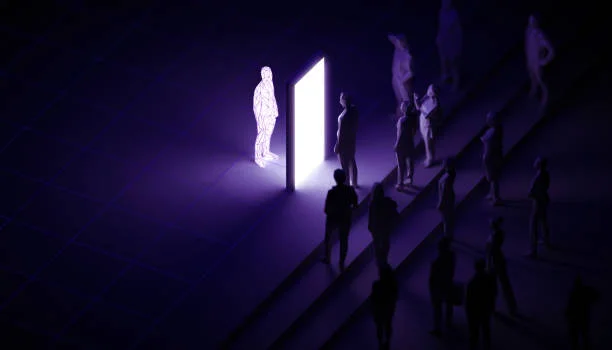Introduction: Illuminating the Hidden Forces
In a world flooded by data, screens, and seamless interactivity, most of us rarely stop to think about what lies behind the visible. But what if the real story begins not on the screen—but behind it? Backlight Chapter 1 isn’t just a phrase. It’s a metaphor, a signal, and perhaps the genesis of a new narrative—technological, philosophical, and even existential.
This is not just about pixels and panels. Backlight Chapter 1 is the code name for a conceptual movement, a new way of thinking that shifts the focus from what we see to what enables the vision. A silent architecture, powering innovation from the shadows.
What is Backlight Chapter 1?
At its core, Backlight Chapter 1 is a speculative framework—a blend of hardware metaphors, philosophical reflection, and digital infrastructure models. Think of it as a manifesto wrapped in metaphor, pointing to the invisible systems powering visible change.
Technically, “backlight” refers to the illumination layer behind LCD screens, enabling content to become visible. Conceptually, Backlight Chapter 1 represents the first acknowledgement of those background forces—technologies, ideologies, and infrastructures—that remain unseen but define modern life.
It is a story of beginnings: the unseen Chapter 1 behind every digital experience, innovation sprint, or AI breakthrough.
The Origins and Philosophical Undercurrents
Backlight Chapter 1 is born from a paradox: the more seamless technology becomes, the less we understand it. In the post-interface era—where AI responds before we ask, and sensors predict before we act—our reliance on invisible systems is absolute.
The term emerged within underground design and tech philosophy circles in the early 2020s, gaining traction through speculative forums and academic think tanks. Its first mainstream mention came in a now-archived TEDx talk titled “The Hidden Protocol”—a poetic exploration of infrastructural invisibility in the AI age.
Philosophically, it draws from:
-
Phenomenology (how things appear vs. what they are),
-
Media archaeology (studying forgotten technologies), and
-
Design ontology (exploring objects as world-shaping agents).
In essence, Backlight Chapter 1 argues: We must decode the unseen if we are to design the future ethically and creatively.
There’s plenty more where that came from—browse our other helpful content!
Real-World Applications: Where Backlight Becomes Reality
Though abstract, the influence of Backlight Chapter 1 is visible across domains:
Artificial Intelligence
-
Model training ethics: Who determines the data behind the machine’s decisions?
-
Black box problems: Understanding the “backlight” layers of deep neural networks.
Business and Platforms
-
Platform capitalism: Invisible algorithms curate content, behavior, and value.
-
UX/UI Design: The real challenge isn’t just creating interfaces—it’s shaping what happens before the interface appears.
Design and Aesthetics
-
Dark UX patterns: Design decisions that manipulate rather than guide.
-
Emotive architecture: Lighting and digital ambiance playing silent roles in experience.
Education
-
Curriculum design: Prioritizing visible outputs (grades) over foundational understanding (the backlight).
-
EdTech platforms: Data flows and analytics silently shaping learner identity.
Society and Infrastructure
-
Smart cities: Surveillance systems, network layers, and energy grids—all invisible but central.
-
Climate tech: Background monitoring systems silently directing resource distribution.
Comparison: Backlight vs Traditional Frameworks
| Feature | Traditional Models | Backlight Chapter 1 |
|---|---|---|
| Visibility | Front-facing, explicit | Hidden, foundational |
| User Experience | Output-centric | Process-centric |
| Focus | Interfaces and features | Systems and implications |
| Power Dynamics | Visible control | Invisible influence |
| Example | Social media feed | The algorithm behind the feed |
Traditional approaches optimize the surface. Backlight Chapter 1 demands that we interrogate the architecture beneath.
Future Implications: Ethics, Risks, and Opportunities
Ethical Transparency
What happens when power lives in unseen layers? The ethical implications of Backlight Chapter 1 are profound:
-
Who governs the invisible?
-
Can we audit what we can’t see?
Risks
-
Technocratic manipulation: Without visibility, systems can manipulate users subtly and persistently.
-
Disempowerment: The less we know, the more we surrender control.
Opportunities
-
New literacy: Teaching people how to read systems, not just screens.
-
Designing empathy: Using backlight principles to design with care, not just efficiency.
-
Reclaiming agency: Making the hidden, human again.
Best Practices: Designing for the Backlight Mindset
How can designers, technologists, and thinkers embrace this philosophy?
Surface the Invisible
-
Use transparency tools to show algorithmic logic.
-
Create “explainability modes” in digital systems.
Design for Understanding
-
Favor clarity over cleverness.
-
Avoid deceptive design flows.
Map the Architecture
-
Visualize your system’s hidden layers—data flows, logic trees, sensor networks.
Audit the Impact
-
Regularly evaluate how background systems affect user autonomy and well-being.
Humanize the Hidden
-
Create stories around invisible systems.
-
Give names and interfaces to silent agents.
Conclusion: Reading the Unseen Chapter
Backlight Chapter 1 isn’t just a concept—it’s a lens. A way to see the hidden infrastructures shaping our lives. In a world of luminous surfaces, it asks us to look behind the glow, to trace the origin stories of our digital existence.
Understanding this “chapter one” isn’t optional—it’s essential for reclaiming agency, ethics, and imagination in a hyperconnected age.
We live in the light, yes—but the future belongs to those who can read in the dark.
Loved this post? You’ll find even more just like it on our blog!
FAQs
1. What is “Backlight Chapter 1”?
It’s a metaphor for the unseen systems and structures behind modern technology and design.
2. Is it a real book or software?
No, it’s a conceptual term used to describe hidden digital layers and philosophies.
3. Why should I care about it?
Because these hidden systems influence your choices, behavior, and access to information daily.
4. Where is it used in real life?
In AI, design, business platforms, smart cities—any system where the mechanics are hidden from view.
5. How can I apply its ideas?
Ask what’s behind every system. Push for transparency. Design with awareness of what users can’t see.

